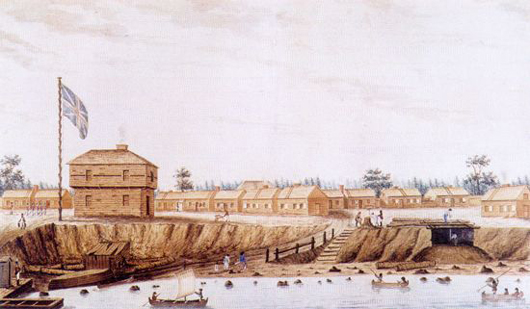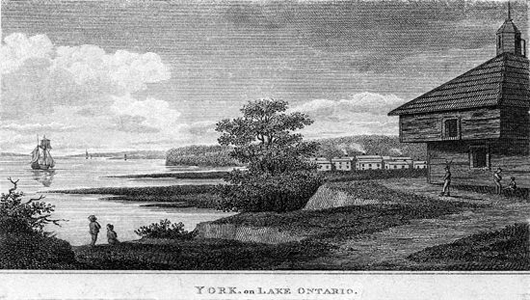Right beside our Library District construction site lies one of the most historically significant sites in Toronto, if not Canada. Fort York was built to protect the small colony of York from American threats in the later part of the 1700’s and has played a key role in the development of modern Toronto as we know it. In the following series we will sit down with one of the most foremost experts on Fort York, Carl Benn, PhD and Dean of History at Ryerson University to chat about the fort’s history and it’s role in shaping Toronto into the city it is today.
In the late 1790’s, the British established forces to protect it’s land of Upper Canada (what is now considered to be most of Ontario) and the colony of York from increasing American military tension. Fort York was built at the mouth of the Garrison creek, to guard York harbor from incoming American attacks. Today, Fort York is a national heritage site that includes the best preserved collection of 1800’s buildings.

Image Courtesy of Friends of Fort York
Library District is being built on a piece of land to the east of Bathurst. Is there anything special about this plot of land?
This plot of land actually used to house Fort York. It was rebuilt on this land in the late 1790’s on the mouth of the creek after the original log buildings had deteriorated at the site just to the west. This fort was the one that was attacked and destroyed in 1813 while under attack from American forces, forcing the British to rebuild the fort in it’s original location where it rests today.

Image Courtesy of Friends of Fort York
So there might be some artifacts in the ground still?
Yes and no. The area Library District is being built on is actually backfill, the original lake shoreline in the 1800’s would have cut this property in half, so the only archaeologically sensitive area would be where the public space is being built. However, anything that would be even remotely of archaeological importance is under about 10-20 feet of soil.
You mentioned Garrison Creek, How come there is no trace of it today?
There is, it’s now a road waste collector sewer deep underground.
Image Courtesy of Friends of Fort York
Is it true that the British Blew up Fort York?
That is actually a pretty common misconception: the British were heavily outnumbered and were retreating from the battle to head back and protect the town of York. To hold off the American advancement, the British detonated the ammo magazine on site, inflicting heavy casualties on the American side and causing an explosion so large, it could be seen from Fort George (Located in Niagara-on-the-Lake).
To learn more about Fort York, pay a visit! And don’t forget to say ” Hello” to Library District across the street 🙂
You can find more about the history of Fort York by reading the works of Carl Benn on Amazon or at your local library.
Find out what’s happening with Context on Twitter and Pinterest